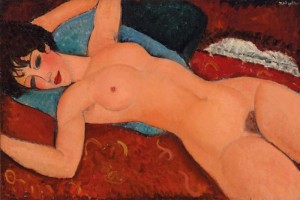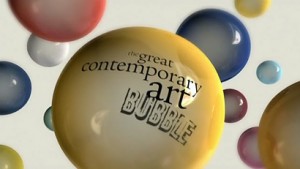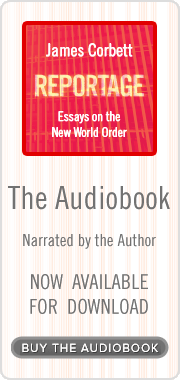 by James Corbett
by James Corbett
TheInternationalForecaster.com
November 10, 2015
Do you think Modigliani’s Nu Couché is beautiful? Would you shell out $170.4 million for it? Well, someone just did. Specifically, that “someone” is Liu Yiqiang, an eccentric taxi driver-turned-billionaire stock trader who outraged the art world last year after buying a Ming dynasty porcelain cup for $36.3 million (a record for a Chinese artwork sold at an international auction) and then being photographed drinking tea from it. His latest purchase marks not only the highest price ever paid for a Modigliani by a fair margin but also the second-highest ever paid for a painting at auction after Picasso’s Les Femmes d’Alger (“Version O”) ($179.4 million).
While this kind of eye-popping, record-setting art sale isn’t particularly important in isolation, the overall trend in the art market is a reflection of much bigger forces at work in the economy. And this sale is undeniably part of a trend. Both the record-setting Picasso purchase and the close-second Modigliani purchase took place this year. In fact, five of the top ten art purchases of all time have taken place in the last 15 months, and that is in inflation-adjusted dollars. What’s more, Christie’s set a record earlier this year by selling over $1 billion of art in a single week. And in the ultimate sign that the apocalypse is nigh, art investment funds that offer partial “ownership” of masterpieces are becoming the hip way for jet-setting globalist multi-millionaires to diversify their portfolio (for a cool million-dollar minimum investment, of course).
 Understanding what is happening here is not particularly difficult. It happened in the early ’80s during the stock market run up and hit a brick wall in the crash of 1987. It re-surged in the late ’80s when the Japanese central bank created a credit bubble that fueled a real estate bubble that led to a stock market bubble and hit a brick wall when the bottom fell out of the Nikkei in 1990. And it’s happening now, with the S&P and Dow at near-record valuations after years of Fed-supplied funny-money liquidity. It’s an art bubble, and it’s just one of the signs of how far investors have detached from the actual productive economy in search of returns in a world of ZIRP and NIRP.
Understanding what is happening here is not particularly difficult. It happened in the early ’80s during the stock market run up and hit a brick wall in the crash of 1987. It re-surged in the late ’80s when the Japanese central bank created a credit bubble that fueled a real estate bubble that led to a stock market bubble and hit a brick wall when the bottom fell out of the Nikkei in 1990. And it’s happening now, with the S&P and Dow at near-record valuations after years of Fed-supplied funny-money liquidity. It’s an art bubble, and it’s just one of the signs of how far investors have detached from the actual productive economy in search of returns in a world of ZIRP and NIRP.
Although it may seem like a trivial point, it actually demonstrates a few things about our current economic situation. Firstly, and most obviously, it reminds us of the swelling ranks of billionaires around the globe who are causing a boom in the luxury economy even as those at the bottom of the economic ladder continue to stagnate. Secondly, it reminds us that central bank manipulations (in this case the quantitative easing programs of the Fed and years of near-zero interest rates) always lead to malinvestment (i.e. bubbles) that further distort economic reality. And thirdly, it reminds us how spates of art sale records have presaged sharp crashes in the past.
If anything is different this time it is that the collectors who are shelling out the big bucks are now no longer American (or even Japanese) but Chinese, Qataris, Russians and other international investors. This is no more than a reflection of the globalization and development of previously disconnected investment markets. Spending unimaginable amounts of money on paintings is now no longer the purview of rich Western elites.
At the end of the day, there are bigger fish to fry than out-of-control art prices, but they do give us a window into the distortions that the Fed and their central banker cronies have been introducing into the markets for the past decade. And they also give us an insight into the brick wall that may be just ahead.
But don’t worry, the bottom won’t truly fall out of the market until people start saying that “this time it’s different” and “this bubble isn’t going to burst.”









This isn’t a bubble. It’s a rock. This story is just more evidence that the global economies are stronger than ever. It’s different this time…
Now we wait… 0_o
Sorry – but it is easy to play around with STOLEN money!!!!